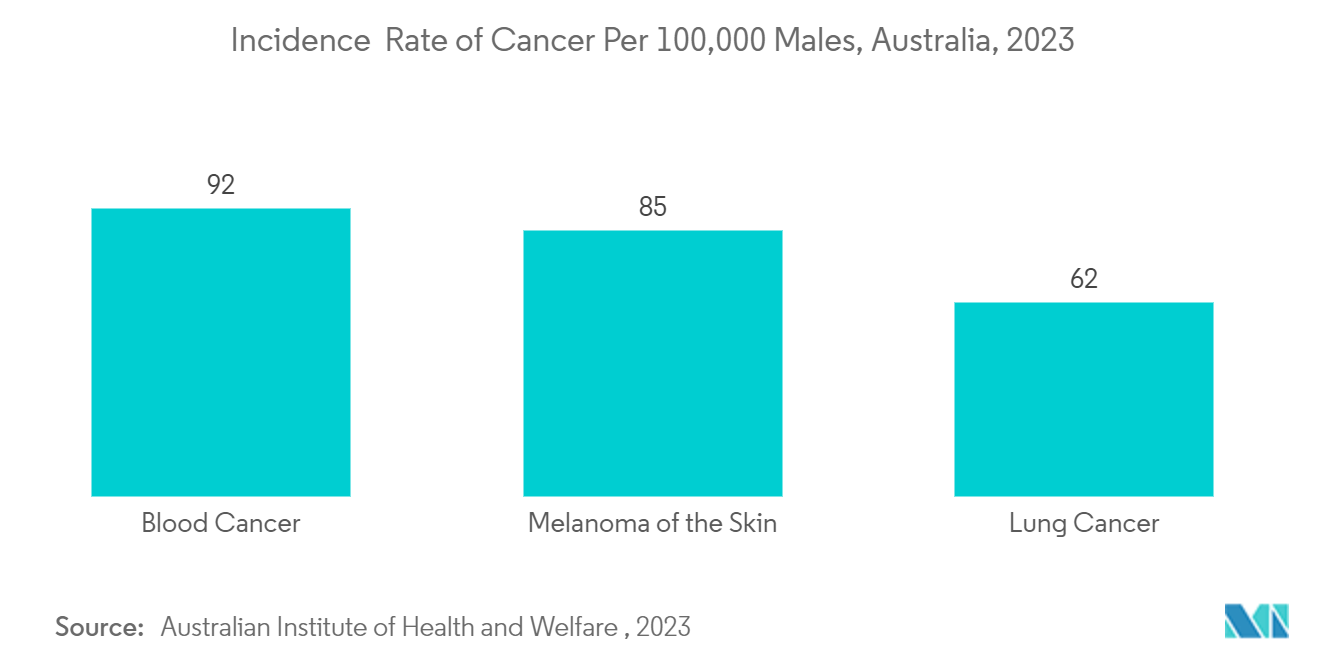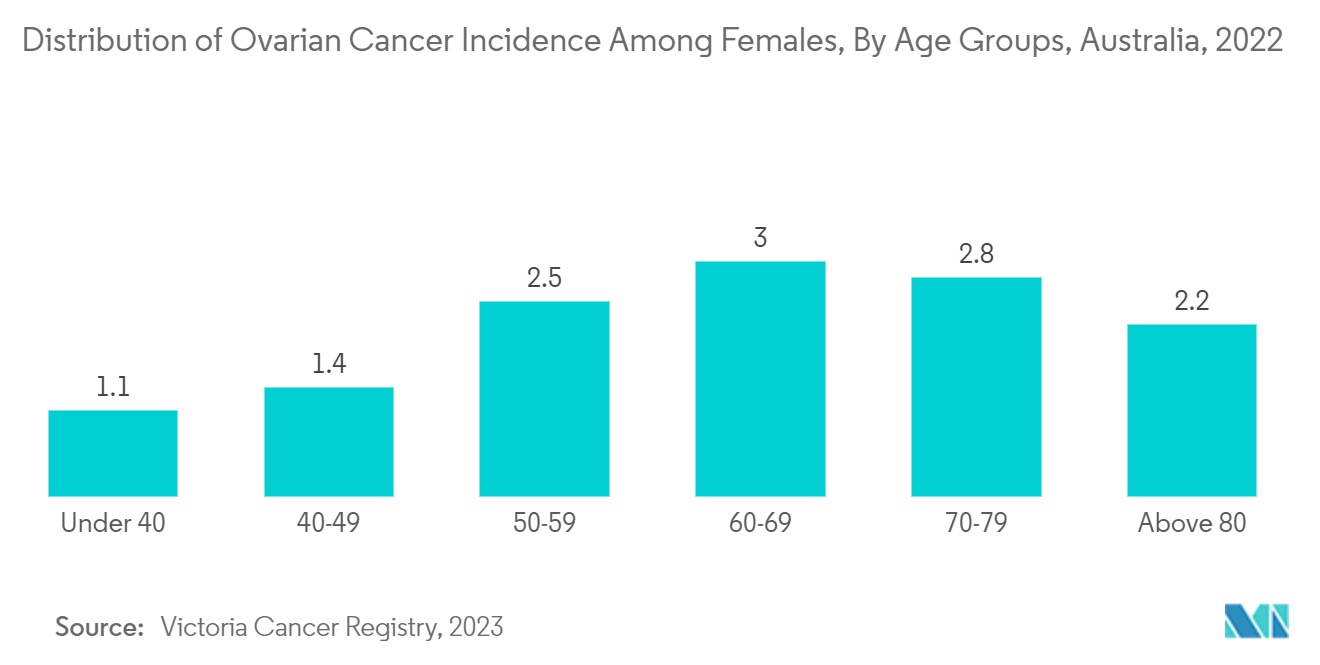Market Trends of Australia Ultrasound Devices Industry
The Segment for High-intensity Focused Ultrasound is Expected to Hold a Significant Market Share Over the Forecast Period
Focused ultrasonic energy is a non-invasive method for tissue ablation, and it can be used to treat a variety of solid tumors. High-intensity focused ultrasound is utilized more frequently to treat primary and metastatic tumors because it can accurately identify tumors for ablation. High-intensity focused ultrasound is a potential therapy option for liver tumors in patients with significant medical co-morbidity who are at high risk for surgery or have a relatively low liver function that may limit hepatectomy.
Factors such as the increasing cancer prevalence and research studies on high-intensity focused ultrasound devices are expected to increase segment growth. For instance, according to the data published by the Australian Institute of Health and Welfare in August 2023, around 165,000 new cancer cases were diagnosed in Australia in 2022. The same source also stated that the age-adjusted cancer incidence rate among males was 731 cases per 100,000 males and 536 cases per 100,000 females in Australia in 2023. With the high prevalence of cancer in the nation, the demand for ultrasound devices is anticipated to rise as it is commonly used to detect and diagnose cancer/tumors.
Whole-gland high-intensity focused ultrasound (HIFU) presents a potential alternative minimally invasive and safe option for treating localized prostate cancer. For instance, according to the article published by the Cancer Australia Organization in October 2023, the organization provides various treatment options for the treatment of prostate cancer, including high-intensity-focused ultrasound therapy in which an endorectal proof is utilized to generate high-energy ultrasound waves to destroy cancerous cells with heat. Thus, this may lead to increased demand for HIFU systems for the minimally invasive treatment of prostate cancer in Australia, leading to higher adoption of HIFU systems in Australian healthcare.
Government investments to develop advanced healthcare infrastructure with advanced technology are anticipated to drive market growth in the country. For instance, in July 2023, the Victorian government invested USD 10.09 million (AUD 14.83 million) in the National Imaging Facility's (NIF) research infrastructure in Victoria to boost its critical imaging abilities with the integration of next-generation high-intensity focused ultrasound, The Florey, to treat Parkinson's disease. Thus, such government initiatives are expected to boost the adoption of high-intensity focused ultrasound devices, boosting market growth.
Hence, considerable segmental growth is expected in Australia over the forecast period due to factors like the prevalence of cancer, significant applications in cancer treatment, and government initiatives.

The Gynecology/Obstetrics Segment is Expected to Witness Considerable Growth Over the Forecast Period
In obstetrics, transvaginal ultrasound can assess fetal brain anatomy and development, especially during the first trimester, or diagnose problems such as placenta previa. Ultrasound is the safest option for the mother and baby to see structures in motion. In addition, it also helps to see the heart in motion, and these images help obstetricians more clearly assess the development during pregnancy. The gynecologic ultrasound is used to diagnose conditions in the cervix, fallopian tubes, ovaries, uterus, vagina, and bladder in women. In men, it is used to analyze the bladder, the prostate gland, and seminal vesicles.
The increasing number of cases of gynecological diseases in Australia is one of the major factors propelling the demand for ultrasound. For instance, according to the research article published by the Australian Cancer Research Foundation in July 2022, ovarian cancer is the eighth most commonly diagnosed cancer in Australian women. Compared to other gynecological cancers in Australia, ovarian cancer has the highest mortality rate at 4.8% of all cancers in women annually. The same source also stated that approximately 1,800 Australian women are diagnosed annually; internationally, the number of diagnoses reaches almost a quarter of a million.
Similarly, according to the report published by Cancer Australia in July 2022, around 1,815 new cases of ovarian cancer were diagnosed in Australia in 2022. The same source also stated that it was estimated that by the age of 85, a woman has a 1.2% chance of being diagnosed with ovarian cancer, including serous carcinomas of the fallopian tube. Thus, such an increasing burden of gynecological diseases in Australia is expected to increase the demand for ultrasound devices, thereby propelling segmental growth over the forecast period.


